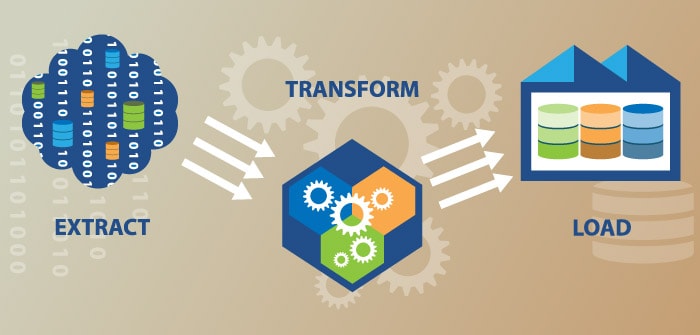ETL
ETL, which stands for extract, transform, load, is a data integration process that involves extracting data from various source systems, transforming it into a suitable format or structure for storage and analysis, and then loading it into a target database or data warehouse. The transformation step might include filtering, aggregating, de-duping, and/or enriching the data to match the target data structure.
Today, efficient ETL processes are essential for consolidating data from different sources. Many organizations use different systems that don't naturally communicate with each other (like legacy EDI systems, cloud services, and modern applications). ETL bridges these gaps by moving and standardizing data between them, making it ready for reporting, analysis, and decision-making.

Altova MapForce is a powerful - yet affordable - ETL tool that supports all major data formats and databases. A selection of ETL articles on the Altova blog includes:
- Introduction to ETL
- ETL Basics (Video)
- How to Create Batch Data Mapping for ETL
- Extract PDF Data for ETL
- ETL for Shopify Data
- How to Convert Data for ETL (Video Series)
- Using Decision Tables to Implement Conditional Logic
Posts categorized: etl
- Data Mapping Made Easy
- Using Decision Tables to Simplify Data Mapping Logic
- Unlocking Scanned PDFs with OCR Support in MapForce
- How to Create Batch Data Mapping Projects
- OpenAPI Tools for Developers
- Updating Shopify Inventory from a Mobile App
- Exporting Products from Shopify as CSV
- ETL Tutorial: Video
- What is ETL?
- ETL Basics: CSV to Database in MapForce
- Text Search for Precise PDF Data Extraction
- Extract Data for PDF Mapping
- AI-based support request sentiment analysis using MapForce and GPT-4
- How to Create a Chained Data Transformation
- How to Convert Data in MapForce [Video]
- Validating and Debugging Data Transformations
- Transitioning Data Mapping Projects from Development through Testing and Production
- JSON Data Mapping and Transformation with MapForce
- Process Multiple Input Files in a Single Data Mapping